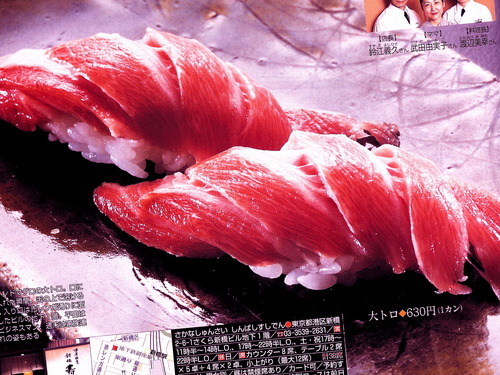What Do You Mean, No Tuna?

Last night I asked the attendees of my Sushi Concierge dinner class to examine the platters of traditional sushi I’d had specially prepared for them, then tell me what was missing. They noticed several things: no wasabi (more on that here) and no rolls (which I’ll get to in a future post). And then they hit on what I was particularly hoping they’d notice: the glaring absence of tuna.
One of the biggest surprises of my research into the history of sushi has been the discovery that not very long ago, the Japanese considered tuna a garbage fish! It was especially to be avoided in sushi.
As I talked with sushi chefs and read scholarly Japanese books on sushi, I learned that traditionally, sushi aficionados preferred lighter, smaller, more delicate fish. If you had to make sushi out of tuna because there was nothing else available, you’d marinate the tuna heavily in soy sauce to temper the flesh, which Japanese diners considered too bloody and cloying to be appetizing. You occasionally still see this preparation today—it’s called zuke.
 As for the super-expensive cuts of fatty tuna belly that we’ve gone gaga over? Japanese fish mongers used to feed those cuts to their cats. That rich fattiness was never a virtue in traditional sushi.
As for the super-expensive cuts of fatty tuna belly that we’ve gone gaga over? Japanese fish mongers used to feed those cuts to their cats. That rich fattiness was never a virtue in traditional sushi.
The cult of tuna in sushi didn’t develop until the few decades since World War II. And ironically, this development has a lot to do with Western influence on the Japanese diet. As American cultural influence inundated Japan after the war, Japanese people started eating a richer, fattier diet with more red meat.
Now, sadly, the almost exclusive obsession with tuna sushi is leading to the decimation of one of the ocean’s most majestic fish, the bluefin tuna.
What makes that even sadder is that it’s completely unnecessary. Old-school sushi aficionados today still hold that the more traditional sushi fish are the ones that are the most interesting to eat—an opinion which with I entirely agree.